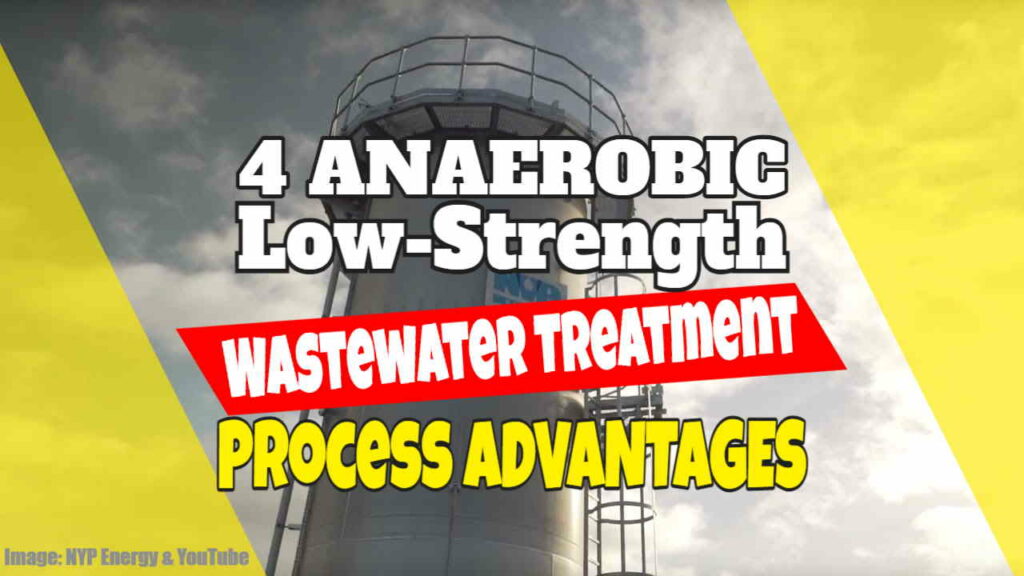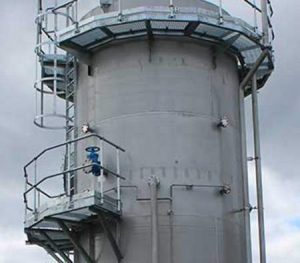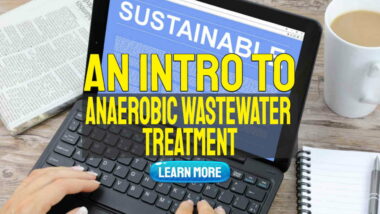The term Anaerobic Low Strength Wastewater Treatment is truly a mouthful when spoken!
However, to rapidly explain the NVP Energy Process, even that long string of words fails to mention its most fundamental feature, which isn't even in our list of 4! The feature which NVP Energy System possesses has been a huge handicap for the AD process until now, especially for the use of AD in the developed world which mostly resides in temperate and cold climates.
In fact, this step forward was probably going to be essential to enable anaerobic digestion to be offered at all, for the large volumes of water in most low-strength wastewater effluents.
What is this momentous step forward? It's a low-temperature operation!
A Low-Temperature Anaerobic Digestion Breakthrough
For the large volumes of cool, or cold, water involved in low-strength wastewater treatment, the NVP Energy Process low-temperature treatment breakthrough was essential to unlocking the 4 advantages described below.
For normal purposes the process operates at ambient temperatures: It needs none of the expensive heating otherwise necessary for traditional anaerobic digestion processes. It is truly a low-temperature process, operating down to as low as 4 degrees Celsius.
The NVP Energy system is not yet widely known but is becoming well established with some very large corporate clients, and has huge potential for replacing high net-energy demand aerobic treatment processes.
Those readers that have not heard of the process should read on, because this will in the author's opinion, certainly not be the last time you will hear about NVP Energy.

In a nutshell, as stated on their website;
“NVP Energy’s technology treats low-strength wastewater and produces energy, in one efficient package”.
This puts Anaerobic Low Strength Wastewater Treatment in a class of its own as a water treatment process for all industrial effluents which contain significant organic content.
1. Anaerobic Low Strength Wastewater Treatment Produces High-Quality Biogas with Energy to Spare
Not only does the NVP Energy system convert the pollutants in wastewater into biogas, but it is also a net energy exporter.
The gas is methane-rich biogas. It is of extremely high quality, even when raw from the process. Raw “NVP Energy process” (Anaerobic Low Strength Wastewater Treatment) biogas is, we are informed by NVP, on average, above 85% methane content. That is close to being equivalent to natural gas quality.
Due to the high quality of the biogas, little to no scrubbing of the biogas is required, facilitating the ease with which the biogas energy exported, after allowing for the operating cost required to run the plant, can become a revenue generator.
Furthermore, the quality is such that the exported biogas commands a high value, and is much more versatile in its uses, than normal biogas.
NVP Energy states that it's clean enough not to be limited in its use, in the way that the biogas from traditional Continuous Stirred Reactor (CSR) Biogas Plant biogas can be.
Amazing Results from Low-temperature Anaerobic Low Strength Wastewater Treatment
Low-temperature Anaerobic Digestion is a novel energy-positive and carbon-neutral process that NVP Energy has developed to treat low-strength wastewater to a high quality in a sustainable manner.
The system requires no heat input or biogas recirculation, generates insignificant amounts of sludge, has a small modular design, and generates effluent that meets UWWD standards without post-aeration.
The system operates at low temperatures, ensuring that the biogas generated by the process is completely available to the end user for the provision of onsite heat and power. This lowers operational costs and creates a lucrative new revenue stream through the use of government incentives.
This has similarities to the long-established process known as the Upflow Anaerobic Sludge Blanket (UASB) and is truly impressive for an anaerobic wastewater treatment process.
2. Reduced Wastewater Treatment Costs vs Aerobic (Aeration) Processes and Conventional CSR Anaerobic Digestion Plants
NVP Energy’s technology provides a robust wastewater treatment and energy-producing technology in one compact package which has inherently a lower cost than aeration processes. That is, firstly, because the huge burden of electricity payments for aeration and mixing energy is removed.
But, it is also due to factors such as the NVP Energy process requiring only a very small footprint. Plus, it comes ready assembled to the site and is set up and ready to be commissioned far more rapidly than conventional CSR Anaerobic Digestion Plants.

The self-contained anaerobic low-strength wastewater treatment process needs no addition of process chemicals, and the reactor organisms are simply low-temperature anaerobes derived via natural selection. There are none of the possible bio-hazard risks of genetically modified microbes.
There are no wearable moving parts inside the anaerobic low-strength wastewater treatment reactor which requires otherwise costly maintenance, in contrast to the ubiquitous use of mixers inside CSR reactor tanks, and aerators and mixers essential to aerobic processes.
Exact cost comparisons between Anaerobic Low Strength Wastewater Treatment and the traditional alternatives will vary with every application of this technology. Sludge generation rates can vary within all treatment processes and sludge disposal can be costly. However, we are informed by NVP, that yet again the anaerobic NVP Energy process option is inherently a lower sludge production process than competing aerobic systems. NVP Energy points out that the negligible sludge production of the process is a consequence of producing biogas in place of the sludge that an aerobic system would produce.
Percentage COD/BOD removal rates may not be as high as for some aerobic processes, but NVP Energy states that COD removal rates of up to 90% are achieved, depending on the particular wastewater stream.
3. On-site Electricity and Heat

As the energy produced by the NVP Energy system/ process technology is greater than the energy required to operate it, the renewable energy that is generated becomes a valuable resource that can be used both to run the process and sell for income.
This is done by electricity generation, and the engine cooling jacket also produces heat which is available to be used in the business. Unlike traditional CSR AD plants, there is no need for this heat to be piped back into the digester tanks to maintain warm (mesophilic) or hot (thermophilic) conditions when using Anaerobic Low Strength Wastewater Treatment.
Common uses of the available heat energy are for producing large quantities of hot water which are required in many factories, via a combined heat and power (CHP) unit, and space heating provision is also a potential use.
Using biogas as an energy source in this anaerobic low-strength wastewater treatment system not only reduces operational expenditure on electricity and/or heat but also reduces the company’s carbon footprint.
This is a feature eagerly sought by many companies which increasingly need to show their shareholders that the company is acting sustainably. By improving the company's corporate social responsibility rating through using the NVP Energy process, share values can very often be maintained, and may rise.
4. Participation in Government Renewable Energy Incentive Schemes
In order to facilitate the uptake of green technologies, most governments incentivize the use of renewable energy sources that reduce the amount of carbon dioxide being emitted into the atmosphere.
Incentives may be in the form of;
- renewable heat incentives,
- feed-in tariffs,
- capital grants, etc. which can be tapped into, and may reduce the costs of “Anaerobic Low Strength Wastewater Treatment” still further.
The biogas produced by NVP Energy's anaerobic low-strength wastewater treatment process can be used to offset the use of fossil-based gas for heat and/or electricity, thus being eligible to receive government incentives.
Joe Shinkwin (Business Development Manager of NVP Energy Wastewater Treatment) said:
“NVP Energy’s technology can turn your wastewater from being an operational cost into a revenue generating commodity by availing of these incentives.”
Anaerobic Low Strength Wastewater Treatment – Conclusion
The advantages of the patented NVP Energy system would appear to be such that all businesses seeking a new Low Strength Wastewater Treatment system for their effluent would do well to consider the implementation of this new anaerobic-digestion-based technology.
Steve Last (Principal of IPPTS Associates) said about Anaerobic Low Strength Wastewater Treatment:
“We think that traditional aeration plant water treatment process technology companies should watch out for their new competitor NVP Energy Wastewater Treatment. This technology ticks so many boxes, that it appears to be exactly what most companies which produce organic effluents will be seeking for their future wastewater treatment.”
For more information go to www.nvpenergy.com .
[Last update 20 December 2017. Latest update April 2023.]






Please advise our community. We seek to use anaerobic digestion for Public Utility Sanitary Unit. We are seeking for information in respect of an Anaerobic Digestion Facility which can use the NVP energy on our wastewater. The goal is to use Anaerobic Digestion for Toilet Facility to be designed for about 300-400 people. Important design criteria must concern hygiene and sanitation. Energy and manure provision are of lesser importance.
Can you advise to us in that respect? Your help is highly appreciated.
We were looking for info about Anaerobic Low Strength Wastewater Treatment. Thankyou for helping out, superb information. Matty